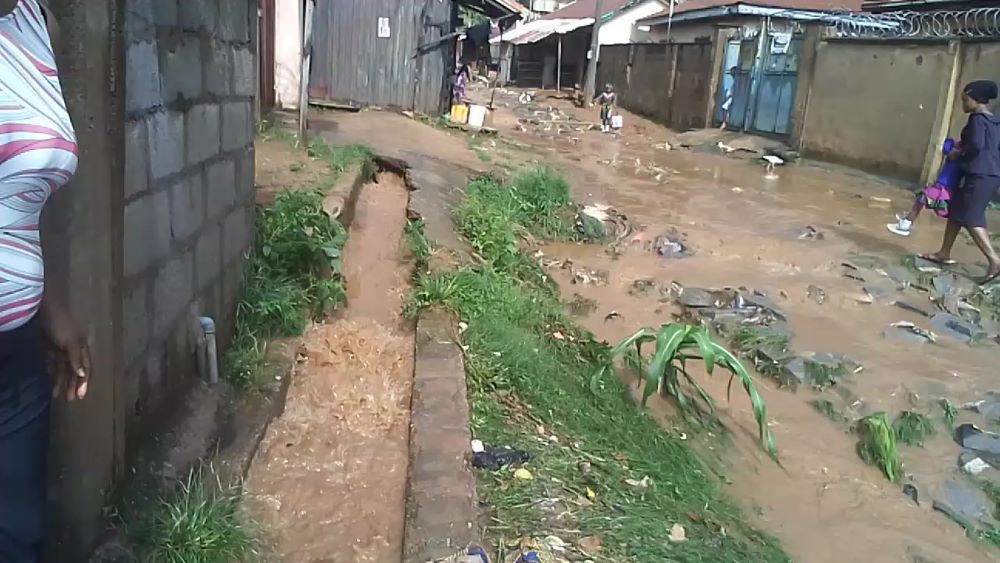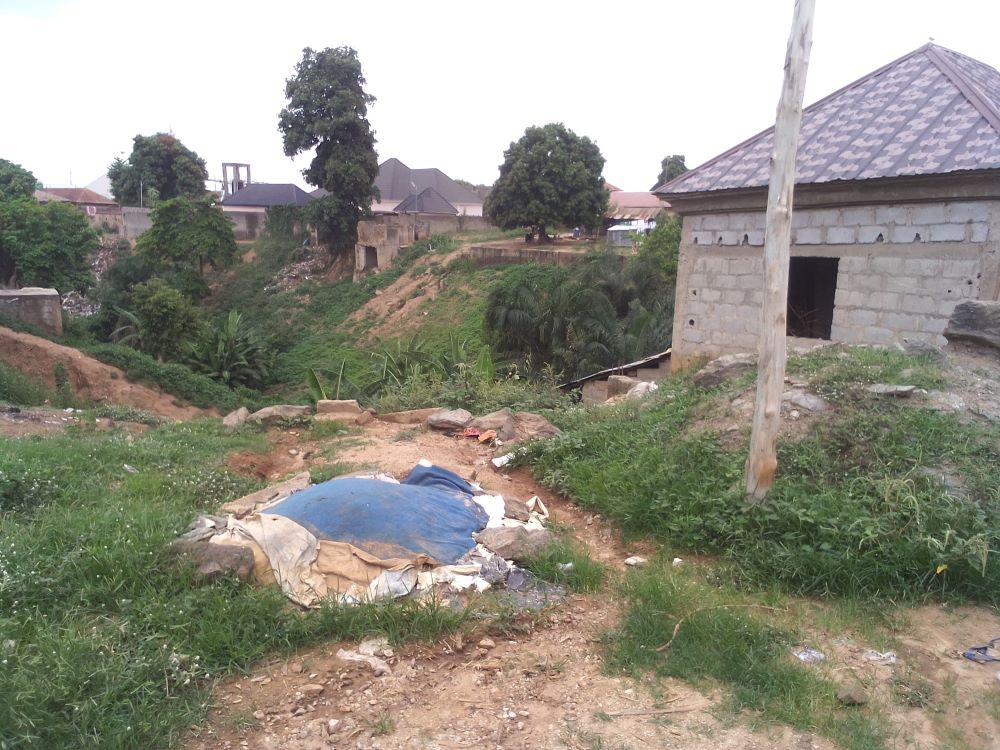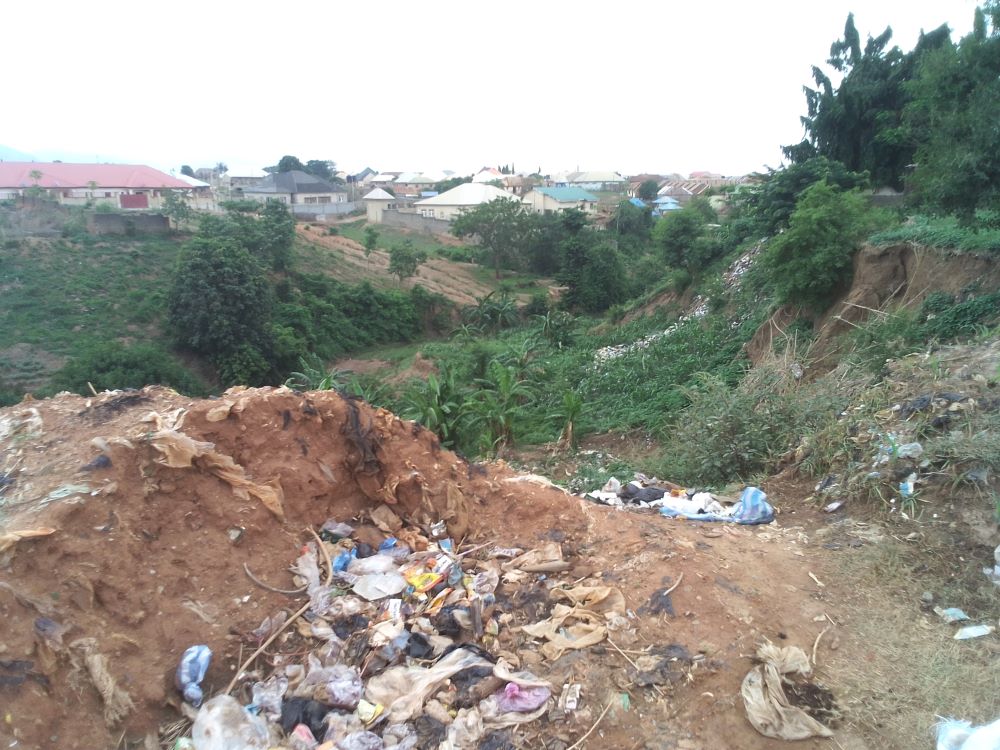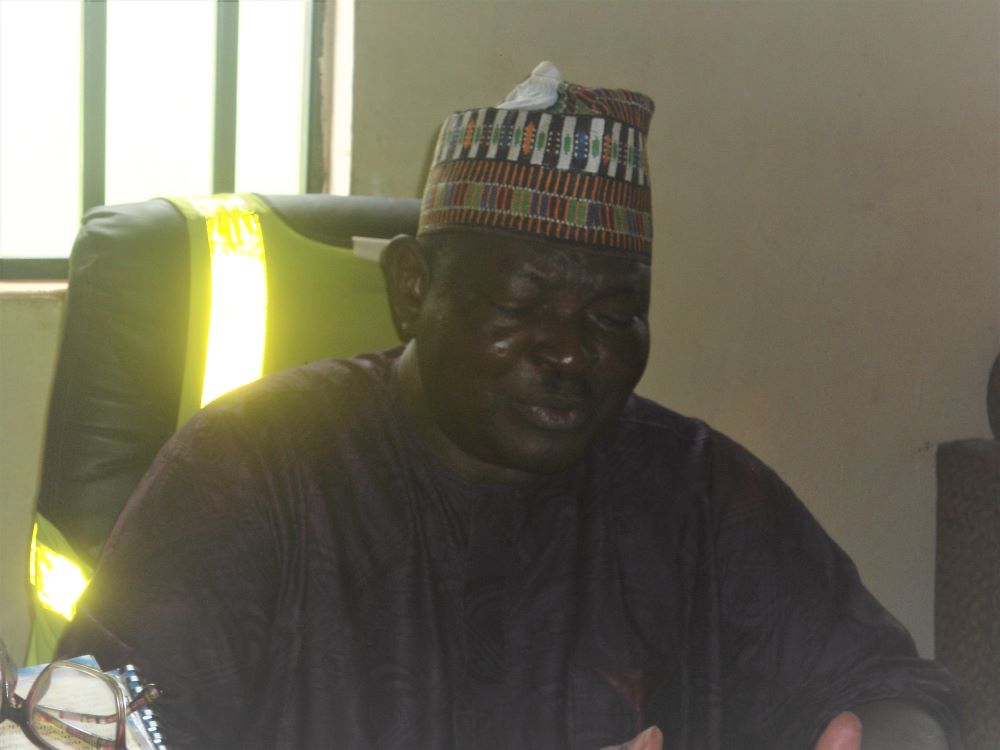12th July, 2023
Residents of parts of highly populated communities in Karu Local government Area of Nasarawa State erect residential homes in erosion gullies even as flooding is becoming commonplace
NKRUMAH BANKONG-OBI/Lafia
Ene Adoyi, a a petty trader was in the church one Sunday morning last month to pray for divine blessings upon her business. While she supplicated with other congregants, the sky flipped its bowels and let down rain in torrents. The water running on the streets, with no drainage system, filled her shop as well as other makeshift stalls located at the Criss Park Street in Mararaba. Together with her colleagues, they lost wares they invested a fortune to buy for the purposes of retailing.
Nearby Old Custom Quarters, Lucy Iyaji who runs a home for the kindergarten has been an unhappy entrepreneur. When it rains, neither herself nor parents of the children are able to access the facility because of stagnant water on the road leading to the building. The lack of passage distorts the smooth functioning of the school anytime it rains heavily, hence costing her income on such days. This is a fixed feature for residents and visitors in parts of Karu Local Government Area in Nasarawa State.
The challenges of flooding and stagnant waters have been blamed on lack of channels to direct rainwater to it final destination.
In the absence of constructed channels, nature has found a course to empty its product. From the Asokoro hills behind the Mogadishu Cantonment in Abuja, rain water devised pathways to empty itself. While the hills effectively take care of themselves, the area beneath suffer as water finds its way through the sandy land. As such, it has dug up large gullies, some large enough, they cut one part of the settlement from the other.

“Water has a way of moving itself. If man refuses to consider water passages by making drainages to take it to a river or a storage point, water will always take care of itself, even at the detriment of the inhabitants of the land,” Justine Akor, an Earth scientist working for a construction company told TheNEWS.
From the bridge linking Nyanya to Gbagbalape community in the Federal Capital Territory through Boundary road, which separates the FCT from Nasarawa, to Kabayi, One Man Village and Ado, all in Nasarawa State, gullies have taken up large swathes of land. And they constitute a threat to people who live nearby. In some cases, household wares have been washed away. “we live in the fear of gutter. See how they are widening, I don’t know when they will take over all of this place,” Cecilia Oni, a landlady in Kabayi said.
If those who live on the fringes of such sites dread their fate, others have moved fully to grapple with theirs in the gullies. This reporter found that in Kabayi, Boundary and adjoining areas people have built houses in the gullies. While some could sandfill the gullies before erecting the structures, others simply build on quicksand. But why do people build on such dangerous places? Agba Agada who built his house in a gully says he bought the land before the craters began to rip open. “I bought this land a long time ago but couldn’t develop it. I had to build this house because I have no money go elsewhere. Land is expensive in Abuja, you know,” he said blaming poverty and lack of government interest in the locality for the uncertain future confronting him and his neighbours.
The government is aware of the catastrophe building up in the areas. Kwa’kaha Ortoho Jonathan, the Director of Erosion Control in the Ministry of Environment and Natural Resources, Nasarawa State, agrees that, “The issue of gully erosion in Nasarawa State generally has been a problem. It is a problem in the sense that we are in the Middle Belt and the impact of climate change – rains do not come when they’re supposed to come. They only come within a short time with very high intensity within the duration. So, as a result of that, the incidents of infiltration become very low and water is left to flow at the surface, coupled with human activities, the issue of gully erosion in Nasarawa state is aggravated.’’ [see interview in below].

Despite this, residents in the gullies and flood-prone areas are unaware of any government intervention. Some of them tell our reporter that they have suffered huge losses yet neither the State nor Federal government has reached out to ameliorate their pain. “I don’t know or believe any intervention from the government at any level. This crater has been widening for years yet, nothing has happened. Why do you think they want to do it? Those of us who reside here have lost things, some, their sources of livelihood. During these times, nobody showed to help us,” Akunne Igwe whose house sits on a gully, tells TheNEWS

People living in the gullies say they fear for their lives and property when it rains. They fear that their houses could be washed away by flood and potential onset of water-borne diseases. Two psycho-social practitioners who spoke to TheNEWS say that the regular feeling of fear increases palpitation, and irregular palpitation of the heart has implications for people of forty years and above. A psychiatrist stressed that being so close to gullies readily makes children feel less confident in their interaction with their peers who live in healthier and planned environments. The loss of belonging, especially given the economic situation in the country, she added, could be a trigger of illnesses like blood pressure, stroke and associated conditions in adults.
As the rains begin to intensify, the gutters are likely to grow wider. Government has however, promised to fix the problem. It is unknown when this intervention will begin. But for now, the people of Mararaba and environs square up to the challenges of dwelling in flooded areas and the gullies yearning at them.
Government Is Fixing All Gullies in Nasarawa State
Kwa’kaha Ortoho Jonathan is the director of Erosion Control in the Nasarawa State Ministry of Environment and Natural Resources. The former Project Director of the World Bank-Assisted Nasarawa State Erosion and Watershed Management Project, NEWMAP, tells our reporter that the government is on the verge of solving the erosion challenge in Mararaba and environs.
Q: What is the State government doing to correct the gullies and erosion challenges in Karu LGA, particularly from the boundary between Abuja down to Kabayi and other places?
A: The issue of gully erosion in Nasarawa State generally has been a problem. It is a problem in the sense that we are in the Middle Belt and the impact of climate change – rains do not come when they’re supposed to come. They only come within a short time with very high intensity within the duration. So, as a result of that incidents of infiltration becomes very low and water is left to flow on the surface, coupled with human activities, the issue of gully erosion in Nasarawa state is aggravated. But the State government is on top of the situation. In Lafia, we have already controlled gully erosion in Angwan Nungu, Rice Mill Area and Behind Emir’s Palace. And government is ready to do more. The State government has also written to the Ecological Fund Office in the Presidency. Once funds are released, more work will be done. As it is now, I know you are talking about the Calvary gully in Kabayi and environs. We have carried out some processes. We have already done the bill of quantity, once they approve, we will send it to the State government and we will go and commence work in that area.
You say the government is aware of the challenge in that area?
Yes

Why are people allowed to build inside the gullies?
Karu generally is at the gateway to the Federal Capital Territory, Abuja. So, because of the rapid rise of the population, everybody is eager to have a roof on his head. This is as a result of population explosion in that area. But that cannot stop government policies from being implemented. So, measures are taken to address the challenge. When we go there to begin work, we must create a pathway for vehicles to move. So, everybody will adjust so that the gullies can be constructed. It is not only in Kabayi, it involves other gully-eroded areas in Karu.
Is that to say for now, people can go on constructing their houses? What will happen when, they ask for compensation by the time you move to the sites?
Recently, and coincidentally, I was a member of the committee formed by the deputy governor, which is looking at the enforcement of environmental laws. As a result of that, the Urban Development Board is there, they have their offices there in Karu, marking and identifying those areas that people have built that are on waterways, those that have gone against the planning regulation, all those ones will be demolished. What I’m saying is that for the purpose of immediate effect, when we come for construction, demolition must be done before construction will continue. That is to say, the State government has a masterplan on how to restructure Karu so that the buildings will be according to plan. But for now, I’m talking about immediate remediation that will mitigate the menace of gully erosion in Karu. That is why I am telling you that in most of the gullies in that place, we have carried out bill of quantity, measurement and evaluation while the design is ongoing. Once the governor gives approval, we are going to commence work because the funds are available in our budgetary provision.
How old are these gullies? I ask because these craters are so big and some of them are chopping into residential areas?
We can control gully erosion as wide as ten meters. In some areas, like the river Ado also in Karu, there is a plan to carry out what we call water trimming, we will build embankment so people whose plots are collapsing by way of mechanical fall, being that the underlaying geology is concrete so that if injection does not take place, water spills into land and upon absorption, there is incidence of mechanical fall, the soil is falling. So, it is causing a lot of erosion problem. It is in our plan to carry out the water trimming starting from Kabayi to Ado Kasa.
So, in terms of advocacy visits to residents and business owners, what are you doing to intimate them of the dangers they face?
It is in our plan. We have carried that out in other areas, we will soon get to Karu.



